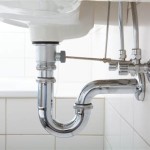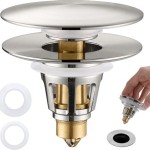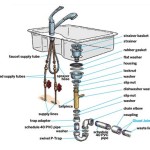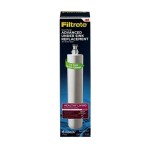What Cleans A Stainless Steel Sink Effectively?
Stainless steel sinks are a popular choice in kitchens and bathrooms due to their durability, sleek appearance, and resistance to rust and corrosion. However, maintaining their shine and cleanliness requires regular cleaning and the use of appropriate cleaning agents. Knowing what effectively cleans a stainless steel sink involves understanding the properties of stainless steel, the types of stains it is prone to, and the cleaning products and methods that are most suitable for its care. This article will explore various cleaning solutions and techniques to keep your stainless steel sink looking its best.
The selection of cleaning agents for stainless steel sinks depends largely on the type of grime or stain being addressed. Everyday cleaning often requires gentle methods, while more persistent stains may necessitate stronger solutions. It's essential to choose cleaning agents that will not damage the stainless steel's surface or leave behind residue.
Gentle Everyday Cleaners
For routine cleaning, mild dish soap is an excellent choice. Its gentle formula effectively removes food particles, grease, and other everyday messes without scratching the surface of the stainless steel. Using warm water alongside a soft sponge or cloth further enhances the cleaning process. After washing, rinsing the sink thoroughly to remove all soap residue is crucial, followed by drying it with a clean towel. This prevents water spots and helps maintain the sink's shine.
Baking soda is another effective and gentle cleaner for stainless steel. Its mild abrasive quality helps to scrub away light stains and buildup without causing scratches. To use baking soda, create a paste by mixing it with water. Apply the paste to the sink's surface, gently scrub using a soft cloth or sponge, and then rinse thoroughly. Baking soda is particularly useful for removing water spots and light discoloration.
White vinegar is a natural acid that can dissolve mineral deposits and hard water stains on stainless steel. To use white vinegar, fill a spray bottle with undiluted vinegar and spray it onto the sink's surface. Allow it to sit for a few minutes to loosen the stains, then wipe the sink clean with a soft cloth or sponge. Rinse thoroughly with water and dry with a clean towel. Vinegar can also be used to remove stubborn food stains and soap scum.
Addressing Stubborn Stains and Residue
For more challenging stains and residue, stronger cleaning agents may be necessary. However, it is crucial to use these products with caution and to test them on a small, inconspicuous area of the sink first to ensure they do not cause damage or discoloration.
Commercial stainless steel cleaners are specifically formulated to remove tough stains and restore the shine of stainless steel surfaces. These cleaners often contain gentle abrasives and polishing agents that help to remove grime and oxidation without scratching the surface. When using a commercial stainless steel cleaner, it is important to follow the manufacturer's instructions carefully. Apply the cleaner to a soft cloth or sponge, gently rub it onto the sink's surface, and then rinse thoroughly with water. Dry the sink with a clean towel to prevent water spots.
A paste made from cream of tartar and water can be effective for removing rust stains from stainless steel sinks. Rust stains can occur due to the presence of iron particles in the water supply or from leaving metal objects in the sink. Apply the cream of tartar paste to the rust stain, let it sit for a few minutes, and then gently scrub with a soft cloth or sponge. Rinse thoroughly with water and dry with a clean towel.
For hard water stains and mineral deposits, a solution of lemon juice and water can be used. Lemon juice contains citric acid, which helps to dissolve mineral buildup. Mix equal parts lemon juice and water in a spray bottle and spray it onto the affected areas of the sink. Allow it to sit for a few minutes, then wipe the sink clean with a soft cloth or sponge. Rinse thoroughly with water and dry with a clean towel.
Preventative Measures and Maintenance
Preventing stains and buildup is just as important as cleaning them. Regular maintenance can significantly reduce the need for harsh cleaning agents and prolonged scrubbing. Several preventative measures can be adopted to keep a stainless steel sink in optimal condition.
Rinsing the sink after each use helps to prevent food particles and other debris from drying and hardening on the surface. This simple step can significantly reduce the amount of effort required for regular cleaning. Using a sprayer attachment on the faucet makes rinsing quick and easy.
Drying the sink after each use is crucial for preventing water spots and mineral deposits. Water spots are caused by minerals in the water that are left behind when the water evaporates. Drying the sink with a clean towel immediately after use removes these minerals and helps to maintain the sink's shine.
Avoiding abrasive cleaners and scrubbing pads is essential to prevent scratches on the stainless steel surface. Abrasive cleaners and harsh scrubbing pads can damage the protective layer of the stainless steel, making it more susceptible to stains and corrosion. Using soft cloths, sponges, and gentle cleaning agents is recommended.
Placing a protective grid or mat at the bottom of the sink can help to prevent scratches and dents from pots, pans, and other heavy objects. These grids or mats create a barrier between the sink's surface and the objects, reducing the risk of damage.
Regularly cleaning the sink's strainer or drain basket helps to prevent buildup and clogs. Food particles and other debris can accumulate in the strainer, leading to unpleasant odors and drainage problems. Cleaning the strainer regularly helps to keep the sink clean and functional.
Applying a stainless steel polish or conditioner after cleaning can help to protect the surface and maintain its shine. These products create a protective layer that repels water and prevents stains from adhering to the surface. Follow the manufacturer's instructions when using a stainless steel polish or conditioner.
By implementing these cleaning solutions, prevention tips and maintenance techniques, keeping a stainless steel sink clean and shiny is possible, enhancing both its aesthetic appeal and its longevity.
Clean A Stainless Steel Sink Easily With Wd 40 Australia

How To Clean Your Stainless Steel Sink Samyx Cleaning

Cleaning A Stainless Steel Sink Going Green With Lisa Bronner

The Secret To Cleaning Stainless Steel Sinks Like A Pro

How To Clean Kitchen Sink Stainless Steel

How To Clean A Stainless Steel Sink And Make It Shine Simple 3 Step Solution With Ingredients Found Around Your Home The Thrifty Couple

The Secret To Cleaning Stainless Steel Sinks Angela Says

Stainless Steel Sink Care

How To Clean Stainless Steel Sink Stains Naturally With Baking Soda Vinegar

How To Clean A Stainless Steel Sink Diy Family Handyman







